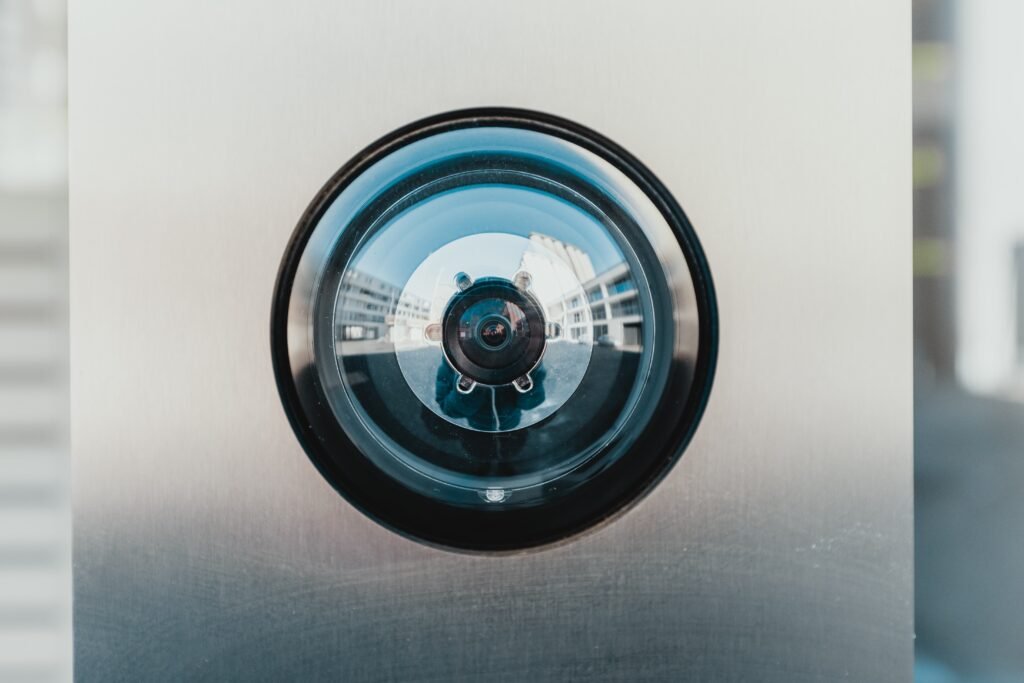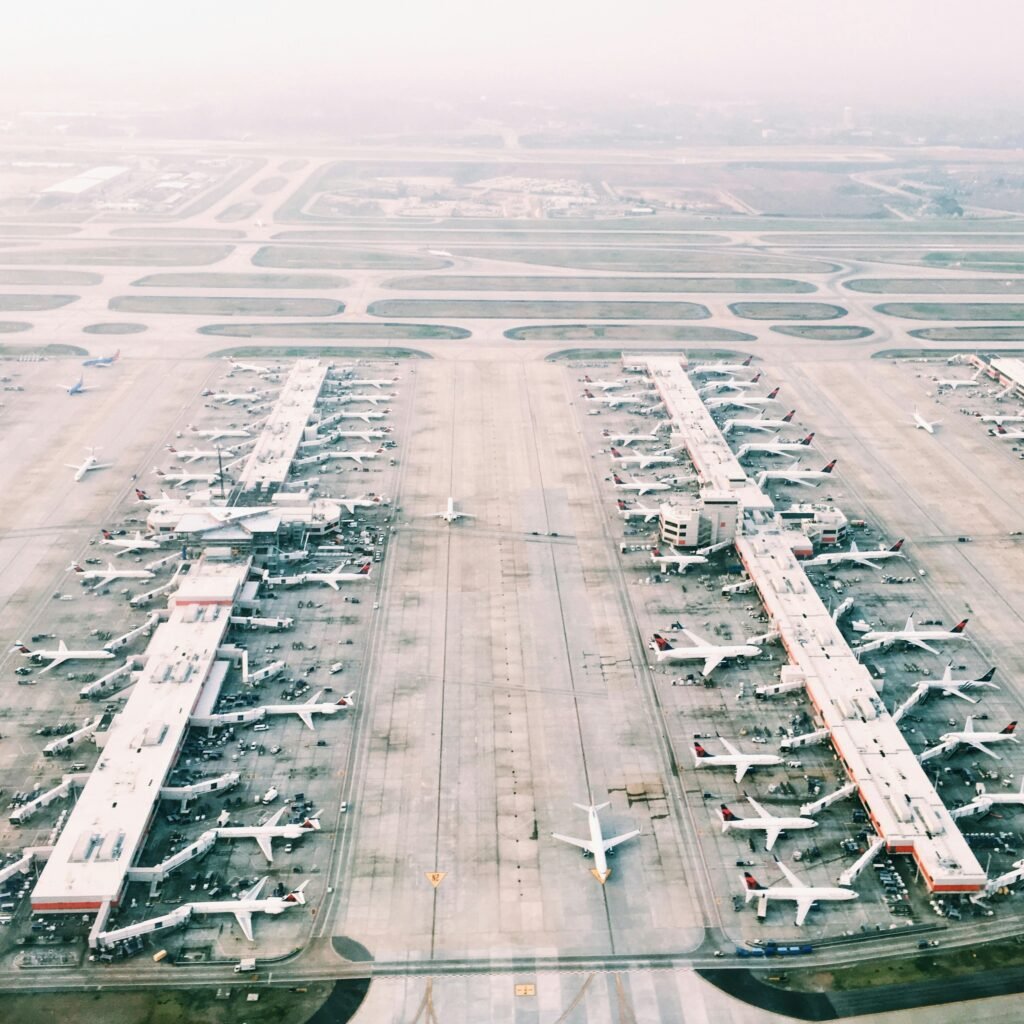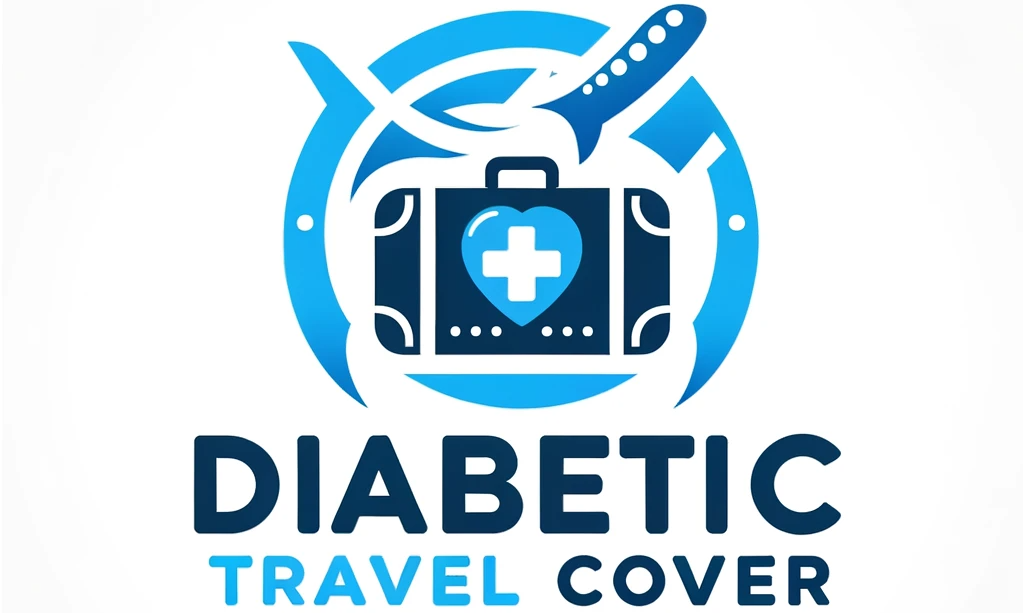Traveling can be stressful enough, but for individuals with diabetes, it can present additional challenges. As someone with diabetes, you may be concerned about how to navigate airport security with your necessary diabetes supplies. This article will provide you with valuable tips and information to help ease the process and ensure a smooth journey through airport security checkpoints. So, relax and read on to discover how to travel with your diabetes supplies hassle-free.
Understanding Diabetes and Travel
Traveling can be an exciting and enriching experience, but it can also pose unique challenges for individuals with diabetes. It’s essential to have a good understanding of diabetes and how it can impact your travel plans before embarking on any journey.
The nature of diabetes
Diabetes is a chronic condition that affects the body’s ability to regulate blood sugar levels. There are two main types of diabetes: type 1 and type 2. Type 1 diabetes is an autoimmune disease where the body does not produce insulin, while type 2 diabetes is a metabolic disorder characterized by insulin resistance.
For individuals with diabetes, managing blood sugar levels is a daily priority. This includes monitoring blood sugar levels, taking insulin or other medications, and making dietary and lifestyle adjustments.
The importance of careful planning for travel
Traveling can disrupt established routines and present unforeseen challenges for individuals with diabetes. Changes in time zones, different food options, and increased physical activity are just a few things that can affect blood sugar levels. That’s why careful planning is crucial to ensure a smooth and worry-free travel experience.
By preparing ahead of time, you can minimize the potential disruptions to your diabetes management routine and have a more enjoyable trip.
How diabetes supplies affect travel plans
When traveling with diabetes, it’s essential to consider the supplies you will need to manage your condition. This includes medication, blood glucose testing supplies, insulin or other diabetes medications, emergency snacks, and any other necessary equipment or supplies.
These supplies must be carefully packed and handled to ensure their effectiveness and to comply with airport security regulations. Understanding how to navigate airport security with diabetes supplies is vital to avoid unnecessary delays or complications during your journey.
Familiarizing with Airport Security Regulations
Navigating airport security with diabetes supplies requires knowledge of the general airport security rules and specific regulations regarding carrying medication and medical supplies.
General airport security rules
Airport security rules apply to all travelers, regardless of their medical condition. These rules include restrictions on carrying liquids, gels, and sharp objects in carry-on luggage. It is important to familiarize yourself with these rules before your trip to ensure compliance and avoid any issues at security checkpoints.
Specific rules for carrying medication and medical supplies
The Transportation Security Administration (TSA) has specific rules regarding carrying medication and medical supplies through airport security. This includes exceptions to the liquid restrictions for necessary medications and allowances for carrying diabetes supplies such as insulin, syringes, and glucose meters.
Knowing these specific rules will help you properly pack and present your diabetes supplies during the security screening process.
Procedure for special medical conditions like diabetes
If you have a special medical condition like diabetes, you may be eligible for expedited screening procedures or accommodations. It is important to inform the TSA officer or a security agent about your condition and any specific needs you may have.
By understanding and following the proper procedures for individuals with diabetes, you can navigate airport security more efficiently and with ease.

Packing Diabetes Supplies for Air Travel
Properly packing diabetes supplies is essential to ensure that you have everything you need during your journey. Here are some steps to follow when packing your supplies:
Deciding what to bring
Before packing, make a list of all the necessary diabetes supplies you will need during your trip. This may include medications, insulin, glucose monitoring equipment, extra batteries, sharps disposal containers, and emergency snacks. Consider the duration of your trip and any potential risks or challenges you may encounter.
It is also a good idea to pack extra supplies in case of unexpected delays or emergencies. Always consult with your healthcare provider to determine the appropriate amount of supplies to bring based on your individual needs.
Steps for packing medication
When packing medication, ensure that you have enough for the duration of your trip, plus a few extra days in case of delays. Keep your medication in its original labeled packaging to easily identify it and to comply with airport security regulations.
For liquid medications, such as insulin, remember the 3-1-1 rule for carry-on liquids: containers must be 3.4 ounces or less, all containers must fit in a single quart-sized clear plastic bag, and each passenger is only allowed one bag.
Packing other diabetes supplies
In addition to medication, it’s important to pack other essential diabetes supplies such as blood glucose meters, test strips, lancets, syringes, or insulin pens. Keep these supplies in a separate container or bag within your carry-on luggage to facilitate the security screening process.
Label any sharps or disposal containers clearly to avoid any confusion or concerns at security checkpoints. Remember to also pack extra batteries for your glucose meter or insulin pump if needed.
Using coolers for insulin
If you are traveling with insulin that needs to be refrigerated, you will need to consider how to store it during your journey. Insulin should be kept cool, but not frozen, to maintain its effectiveness.
Using a small cooler or insulated bag with gel packs can help keep your insulin at the proper temperature. It is important to inform the TSA officer that you are carrying insulin and any cooling devices during the security screening process.
Do’s and Don’ts for packing
When packing diabetes supplies for air travel, consider the following do’s and don’ts:
- Do pack extra supplies in case of unexpected delays or emergencies.
- Do keep medication in its original labeled packaging.
- Do label sharps or disposal containers clearly.
- Do inform the TSA officer about any necessary cooling devices.
- Don’t pack your diabetes supplies in checked luggage.
- Don’t forget to check the expiration dates on your medication and supplies.
- Don’t panic if your supplies are subject to additional screening; this is standard procedure.
By following these packing guidelines, you can ensure that you have all the necessary diabetes supplies for your journey while complying with airport security regulations.
Going Through Security with Diabetes Supplies
Going through security with diabetes supplies can be a straightforward process if you are well-prepared. Here are some steps to take when going through security:
Preparing to go through security
Before going through security, make sure you have easy access to your diabetes supplies, such as medication, glucose meter, and any necessary cooling devices. Keep them within reach, so you can present them easily when required.
Wearing clothing with multiple pockets can be helpful for keeping your supplies organized and readily available. Additionally, consider notifying the security agent about your medical condition and any specific accommodations you may require.
Presenting your diabetes supplies at security
When approaching the security checkpoint, remove your quart-sized bag containing liquids, including insulin, from your carry-on luggage and place it in a separate bin for screening. This will help expedite the security screening process.
Inform the security officer that you are carrying diabetes supplies and place them in a separate bin for screening. It may be helpful to use a clear bag or pouch to keep these supplies together and easily visible during screening.
What to expect during screening
During the security screening process, you can expect your diabetes supplies to go through an X-ray machine or hand inspection. If you prefer that your supplies are not X-rayed, you can request for them to be manually inspected by a security officer.
The TSA has policies in place to ensure the privacy and security of individuals with medical conditions, so you can feel comfortable discussing any concerns or questions you may have with the security officer.
Handling potential issues at security
In some cases, you may encounter issues or delays at security checkpoints due to your diabetes supplies. Remain calm and politely ask for a supervisor if needed. Educate the security officers about the specific regulations regarding carrying diabetes supplies, and if necessary, request that they consult the TSA’s guidelines.
If you feel that your rights are being violated or that you are being treated unfairly, document the situation and report it to the appropriate authorities. It is important to be informed about your rights and to advocate for yourself in these situations.
By being prepared, polite, and informed, you can navigate security checkpoints smoothly and ensure the safety and integrity of your diabetes supplies.

Carrying documentation for your Diabetes
Carrying proper medical documentation when traveling with diabetes is essential. This documentation serves as proof of your medical condition and can help resolve any issues or concerns that may arise.
Importance of carrying medical documentation
Carrying medical documentation is crucial for several reasons. It provides evidence that you have a legitimate need for carrying diabetes supplies, helps facilitate the security screening process, and ensures that you receive appropriate medical care if needed during your journey.
Medical documentation can also be helpful in case of an emergency or when seeking medical assistance in a foreign country. It allows healthcare providers to understand your condition and provide appropriate treatment.
What documentation to carry
When traveling with diabetes, it is advisable to carry a letter from your healthcare provider that includes the following information:
- Your name and date of birth
- A brief description of your medical condition (type 1 or type 2 diabetes)
- A list of medications and supplies you need to carry
- Any special accommodations or considerations required
- Contact information for your healthcare provider
Having a medical ID card or a bracelet that clearly states your medical condition and emergency contact information is also recommended.
Additionally, it can be helpful to carry a copy of your prescriptions for any medications or supplies you require. This can help resolve any issues that may arise when traveling internationally or when seeking medical assistance abroad.
How to present documentation at security
When going through security, it’s important to present your medical documentation to the security officer as needed. Keep it readily accessible, so you can provide it when required.
If you have a medical ID card or bracelet, wear it where it can be easily seen. Inform the security officer about your medical condition and ask if they require any additional documentation or verification.
By carrying and presenting proper medical documentation, you can help ensure a smoother travel experience and avoid any potential misunderstandings or complications.
Understanding Your Rights
As a passenger with a medical condition, it’s important to be aware of your rights and how they apply to travel situations. Understanding your rights can help you navigate potential challenges and handle any issues that may arise during your journey.
Knowing your rights as a passenger with a medical condition
As a passenger with diabetes, you have the right to privacy, respectful treatment, and reasonable accommodations. This includes the right to carry necessary medications and diabetes supplies, to request additional screening procedures, and to receive appropriate medical care if needed.
It is important to familiarize yourself with the specific rights and protections afforded to individuals with medical conditions, both domestically and internationally. These rights may vary depending on the country you are traveling to or from.
How the American Disability Act applies to travel
The American Disability Act (ADA) is a federal law in the United States that prohibits discrimination against individuals with disabilities, including those with diabetes. The ADA applies to various aspects of travel, including airport security, aircraft accessibility, and airline services.
Under the ADA, individuals with disabilities are entitled to reasonable accommodations and equal access to services and facilities. If you feel that your rights are being infringed upon or that you are being treated unfairly, you can seek resolution through the appropriate channels, such as filing a complaint with the airline or reporting the issue to the Department of Transportation.
How to handle discrimination or unfair treatment
Unfortunately, discrimination or unfair treatment can occur, even when traveling with proper documentation and adhering to all regulations. If you believe you are being treated unfairly or experiencing discrimination due to your diabetes, there are steps you can take to address the situation:
- Remain calm and maintain respectful communication with those involved.
- Document the incident, including the date, time, location, and names of any individuals involved.
- Seek assistance from a supervisor or a higher-ranking official, if necessary.
- Report the incident to the appropriate authorities, such as the airline, airport security, or relevant government agencies.
- Consult with legal counsel if the situation warrants further action.
By knowing your rights, advocating for yourself, and seeking appropriate recourse, you can help prevent discrimination and ensure a positive travel experience.

Managing Insulin During Flight
Managing insulin during a flight requires careful attention to temperature considerations and proper storage techniques. Here’s what you need to know:
Temperature considerations for insulin
Insulin is sensitive to extreme temperatures, both hot and cold. It is important to keep insulin within a safe temperature range to maintain its effectiveness. Extreme heat or cold can cause insulin to degrade or lose potency.
During a flight, temperatures in the cargo hold can be extreme, so it is best to bring your insulin and other diabetes supplies in your carry-on luggage. This way, you can ensure better control of the temperature conditions.
Using and storing insulin during flight
When using insulin during a flight, it’s important to follow your usual insulin administration routine. If you typically inject your insulin at mealtimes, continue to do so during the flight, adjusting for any time zone differences.
Store your insulin in a cool, dry place inside the aircraft cabin, such as an insulated bag or a carry-on bag that remains with you throughout the flight. Avoid placing insulin in the overhead compartments, as these areas can sometimes become warm during the flight.
Steps to prevent hypoglycemia and hyperglycemia during flight
Changes in altitude, cabin pressure, and physical activity levels can all impact blood sugar levels during a flight. To help prevent hypoglycemia (low blood sugar) and hyperglycemia (high blood sugar), consider the following steps:
- Monitor your blood sugar levels before, during, and after the flight.
- Stay hydrated by drinking water regularly.
- Avoid excessive alcohol consumption, as it can affect blood sugar levels.
- Eat regularly scheduled meals and snacks to maintain stable blood sugar levels.
- Adjust your insulin dosage as needed, considering any time zone changes.
By closely monitoring your blood sugar levels and making necessary adjustments, you can maintain stable diabetes management during your flight.
Dealing with Time Zone Changes
Traveling across time zones can disrupt your diabetes management routine. It’s important to understand how time zone changes can affect your blood sugar levels and insulin schedule. Here are some tips to help you navigate time zone changes:
How time zone changes affect diabetes management
Time zone changes can affect diabetes management in several ways. Changes in meal times, physical activity levels, and sleep patterns can all impact blood sugar levels and insulin requirements.
When traveling eastward, you may experience shorter days and need to adjust your insulin dosage accordingly. Conversely, traveling westward may result in longer days and require adjustments to avoid hypoglycemia.
Adjusting your insulin schedule for different time zones
To adjust your insulin schedule for different time zones, consider the following steps:
- Consult with your healthcare provider before your trip to determine the appropriate adjustments for your insulin dosage and meal timings.
- Gradually transition to the new time zone by adjusting your insulin dosage gradually over a few days.
- Monitor your blood sugar levels closely during the transition period and make adjustments as needed.
- Keep track of any time zone changes and adjust your insulin administration schedule accordingly.
- Remember to maintain a regular pattern of meals and snacks to help stabilize blood sugar levels.
Working closely with your healthcare provider and monitoring your blood sugar levels can help you effectively manage diabetes while dealing with time zone changes.
Tips for handling jet lag
Jet lag can impact your overall well-being and diabetes management. To minimize the effects of jet lag and adapt to the new time zone more quickly, consider the following tips:
- Adjust your sleep schedule gradually before your trip to align with the destination time zone.
- Stay hydrated by drinking plenty of water throughout the flight and upon arrival.
- Expose yourself to natural sunlight or bright light during the day to help regulate your body’s internal clock.
- Avoid excessive caffeine consumption, as it can disrupt sleep patterns.
- Take short naps, if needed, to combat fatigue but limit them to avoid interfering with your regular sleep schedule.
By employing these strategies, you can help mitigate the impact of jet lag and maintain stable diabetes management throughout your journey.

Emergency Preparedness
Being prepared for emergencies is crucial for individuals with diabetes, especially when traveling. Here are some steps to ensure emergency preparedness during your trip:
Importance of being prepared for emergencies
Emergencies can arise at any time, regardless of where you are. It’s essential to be prepared for unexpected situations that may require immediate medical attention or assistance. This preparedness is even more critical when you have diabetes.
By taking appropriate measures, you can ensure your safety and minimize the potential impact of emergencies on your diabetes management.
Packaging a diabetes emergency kit for travel
Preparing a diabetes emergency kit is an essential step in emergency preparedness. Your emergency kit should include the following items:
- Extra diabetes supplies: medication, glucose monitoring equipment, syringes, or insulin pens.
- A glucagon emergency kit: glucagon is used to treat severe hypoglycemia.
- Fast-acting carbohydrates: glucose tablets, juice boxes, or candy for treating mild hypoglycemia.
- Contact information: emergency contact number, healthcare provider’s contact information, and any relevant medical insurance details.
Keep your emergency kit easily accessible in your carry-on luggage, and inform your travel companions of its location.
Knowing emergency procedures in different countries
When traveling internationally, it’s important to familiarize yourself with the emergency procedures and healthcare systems in the countries you will be visiting. Research the local emergency phone numbers and understand how to access medical assistance if needed.
Consider carrying a translated copy of your medical information and emergency contact details in the language of the countries you will be visiting. This can help facilitate communication with healthcare providers or responders in case of an emergency.
By being prepared and knowledgeable about emergency procedures, you can navigate potential emergencies more effectively and ensure your safety while traveling.
Navigating Foreign Airports with Diabetes
Navigating foreign airports with diabetes may require additional considerations and precautions. Here are some tips to help you navigate foreign airport security rules and communicate your diabetes condition in a foreign language:
Understanding foreign airport security rules
When traveling to foreign countries, it’s important to familiarize yourself with the specific airport security rules and regulations of those countries. These rules may differ from the ones you are accustomed to, so it’s crucial to be well-informed.
Research the airport security guidelines of the countries you will be visiting, paying particular attention to any specific regulations regarding carrying diabetes supplies. This knowledge will help you prepare and pack accordingly, ensuring a smooth passage through security.
Communicating your diabetes condition in a foreign language
If you are traveling to a country where the primary language is different from your own, it can be helpful to learn basic phrases related to diabetes and medical emergencies. This will enable you to communicate your condition and any specific needs to airport security personnel, healthcare providers, or locals who may assist you.
Consider carrying a small translation card or pamphlet that outlines your medical condition and needs in the local language. This can help facilitate communication and ensure that your message is clearly understood.
Finding local diabetes resources abroad
Before traveling to a foreign country, research local diabetes resources such as hospitals, clinics, and pharmacies. Familiarize yourself with their locations and contact information in case you require medical assistance or supplies during your trip.
You may also consider reaching out to local diabetes organizations or support groups in the countries you will be visiting. They can provide valuable information, resources, and support that can help you navigate any challenges that may arise.
By understanding foreign airport security rules, being able to communicate your diabetes condition, and accessing local diabetes resources, you can confidently navigate foreign airports and ensure a safe and enjoyable travel experience.
Navigating airport security with diabetes supplies is a manageable task when armed with the right knowledge and preparation. By understanding the regulations, packing appropriately, and carrying necessary documentation, you can travel with confidence and without unnecessary stress. Remember to always consult with your healthcare provider before traveling to address any specific concerns or considerations related to your diabetes management. With careful planning and a positive mindset, you can embark on your travel adventures while keeping your diabetes well-managed and your focus on exploring new horizons.

